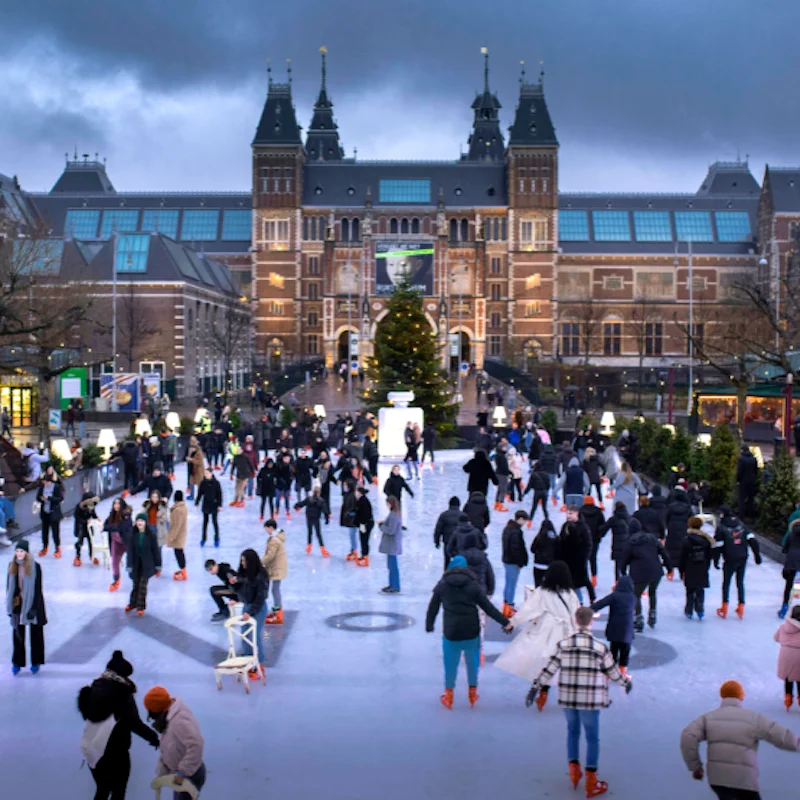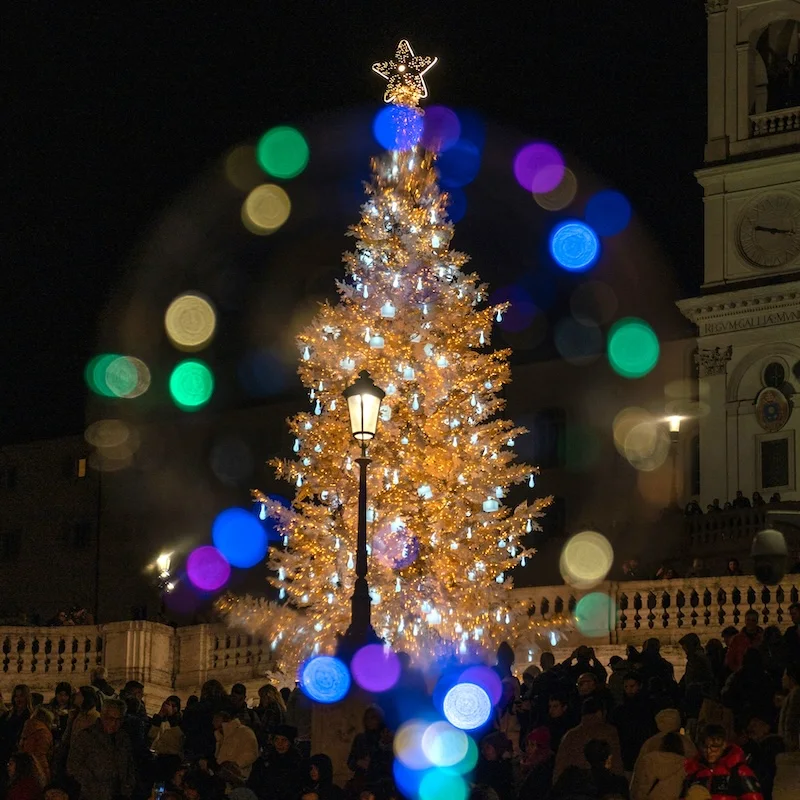Normandy Travel Guide: Everything You Should Know in 2025
Sarah Pardi - September 9, 2025
Home > Travel Planning > Normandy Travel Guide: Everything You Should Know in 2025
Share this post
Planning a trip is half the fun, especially when you're traveling to somewhere as culturally rich and historically relevant as Normandy.
Whether you're interested in traveling to the D-Day beaches, exploring beautiful sites like Mont-Saint-Michel, or aren't really sure what's on the agenda yet, this guide is here to help.
With helpful advice like how to travel from Paris to Normandy, a list of the top things to do in Normandy, and more, this guide will help you plan a once-in-a-lifetime trip to this incredible region of France.
Things to do in Normandy
There are a ton of things to do in Normandy because Normandy isn't a city; it's an entire region in Northwestern France.
While Normandy is famous for a number of things, it's very famous for the part it played in the Second World War, when Allied troops landed on its beaches in 1944 and liberated the nearby towns. D-Day is still held dear to this day, and each year, there are celebrations commemorating this pivotal moment, not only for France but for the entire world.
We've compiled a list of the top things to do in Normandy, whether you're a history buff, art nut, like more unusual experiences, or simply want to enjoy it all.

Visit the D-Day beaches
There are five D-Day beaches in Normandy that you can visit. They are:
- Utah Beach (American landing). In Normandy, this beach is referred to as Plage de Madeleine, Sainte-Marie-du-Monte.
- Omaha Beach (American landing). Omaha Beach is locally called Plage de Vierville-sur-Mer.
- Gold Beach (British landing). The local name is Ver-sur-Mer.
- Juno Beach (Canadian landing). Called Courseulles-sur-Mer locally.
- Sword Beach (British landing), look up the beach at Hermanville-sur-Mer and Colleville-sur-Mer.
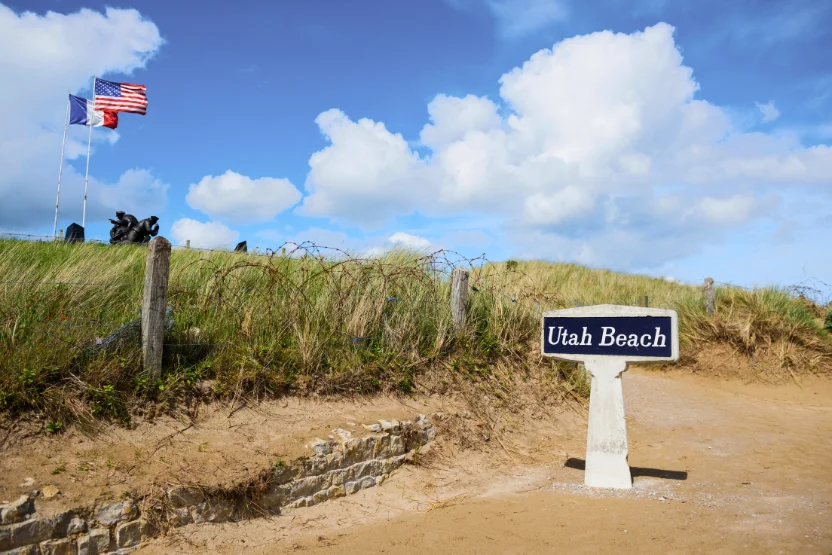
They are in that order, west to east, and stretch about 50 miles in length, from Utah Beach (the furthest west) to Sword Beach (the furthest east). You will likely need to take a car or public transportation if you want to visit all five.
Each beach is accessible to tourists and travelers, and there are different attractions at each. For example, you can find history museums, monuments, cemeteries, and war remnants (like hangars and bunkers). Just keep in mind that each beach varies, and tickets may be required for some of the experiences.
Planning a trip to Normandy? ✈️
Get travel insurance for France, 100% online
When is the best time to visit the D-Day beaches?
Normandy is notoriously rainy and windy. While you can visit the beaches in the winter, the weather may not be so welcoming. Summer is the best time to visit the D-Day beaches, though it's also the busiest time as it's the height of tourist season.
Another great time to visit is late May through early June, when D-Day festivals and celebrations take place.
How far are the D-Day beaches from Paris?
The D-Day beaches are about a 2 hour train ride from Paris.

Experience a storybook moment at Mont-Saint-Michel
Mont-Saint-Michel is a tidal island just off the coast of Normandy, accessible by a land bridge.
Both a UNESCO World Heritage site and one of Europe's leading pilgrimage destinations, Mont-Saint-Michel is a small commune that enchants travelers with its storybook aesthetic.
With its narrow, cobblestone streets, old-world architecture, and flat beaches, even just walking around the commune is exciting.
Arguably, the most famous part of the island is the Abbey. Construction began in the 10th century and finished in 1523. At the center of the island (and at the highest point), the Mont-Saint-Michel Abbey is a must for all visitors.

When is the best time to visit Mont-Saint-Michel?
Mont-Saint-Michel gets extremely crowded in the summer months, which can put a damper on the experience. If possible, it's best to visit Mont-Saint-Michel on weekdays in the off-season, preferably in late spring or early fall (to get the best weather),
There are a few hotels on the island if you're looking for a more intimate experience and fewer crowds after dusk. There are also day trips that you can take, depending on where you're staying.
It's entirely possible to get to Mont-Saint-Michel from Paris using only public transportation, but it takes a few hours.
How far is Mont-Saint-Michel from Paris?
It's about four hours by car and 4-5 by train. Keep in mind that there may be limited trains to and from Mont-Saint-Michel, so make sure to book your tickets well in advance, especially during heavy seasons.

Step back in time in Rouen
Rouen is one of the most famous cities in Normandy, known for its part in Medieval Europe, half-timbered Celtic architecture, and the burning of Joan of Arc.
The perfect city to stroll around in and snap photos, Rouen has a little bit of everything. With unique attractions like a history museum with archaic medical devices (Musée Flaubert et d'Histoire de la Medecine), King Richard's embalmed "Lionheart" (yes, really), and a tower from the Medieval castle where Joan of Arc was held before she was burned at the stake, Rouen has no shortage of things to see and do.
Plus, Rouen is easily accessible by train from Paris.
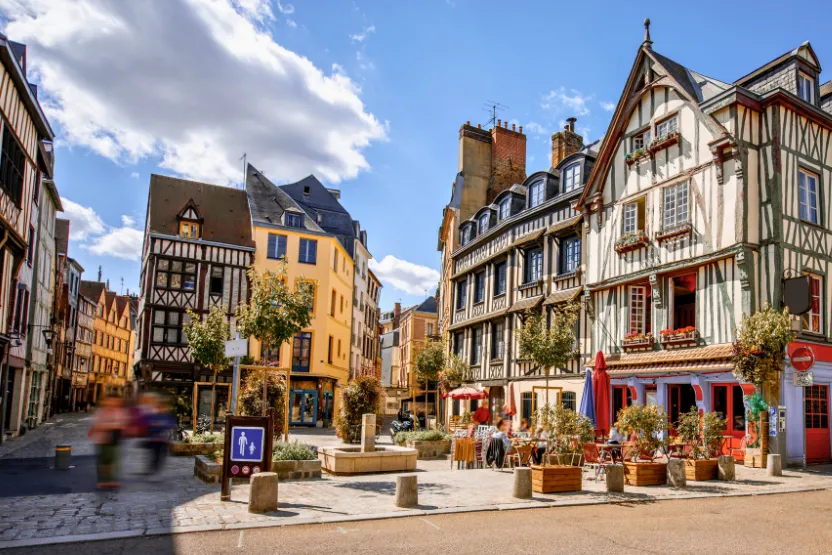
When is the best time to visit Rouen?
Like all of Normandy, Rouen is a rainy city. If you want the best weather, you'll want to plan your trip from May through September. Like all cities in France, the summer months (June-August) are the heaviest when it comes to crowds and tourism.
Rouen is beautiful in the winter months, too, but be prepared for rain and cool days.
How far is Rouen from Paris?
It's about an hour or so by train, then an hour and a half to 2 hours by car or bus.

Visit Claude Monet's home and gardens
Located on the Eastern edge of Normandy, you'll find Monet's former home and gardens at Giverny.
This beautiful estate includes a large pink house with green shutters, Monet's art studio, and expansive gardens with a Japanese-style bridge over lily-pad laden waters.
Easily accessible from Paris, Monet's house is one of the most popular places in Normandy.

When is the best time to visit Monet's gardens?
Unlike many attractions, Monet's home and gardens at Giverny are not open year-round. They're only open from April 1st to November 1st and then remain closed for the winter months.
If you want to see the gardens in their most floral, April and May are the best times to visit (tickets are required). Summer months are popular too, especially on the weekends. Keep in mind that the summer months can be quite hot and crowded.
How far are the Monet Gardens from Paris?
About 90 minutes, but it can be more depending on traffic and time of day.

Feel like you've walked into a real-life painting in Honfleur
This small coastal city is a must-visit for your trip to Normandy. With its famous old port, colorful buildings, and fascinating landmarks (like the oldest wooden church in France), Honfleur is as enjoyable as it is beautiful.
In fact, Honfleur has been a popular destination for artists throughout the years. For those who like Impressionism, meetings that took place in Honfleur were pivotal to the movement's launch.
While it's a small maritime town, it definitely warrants a visit.
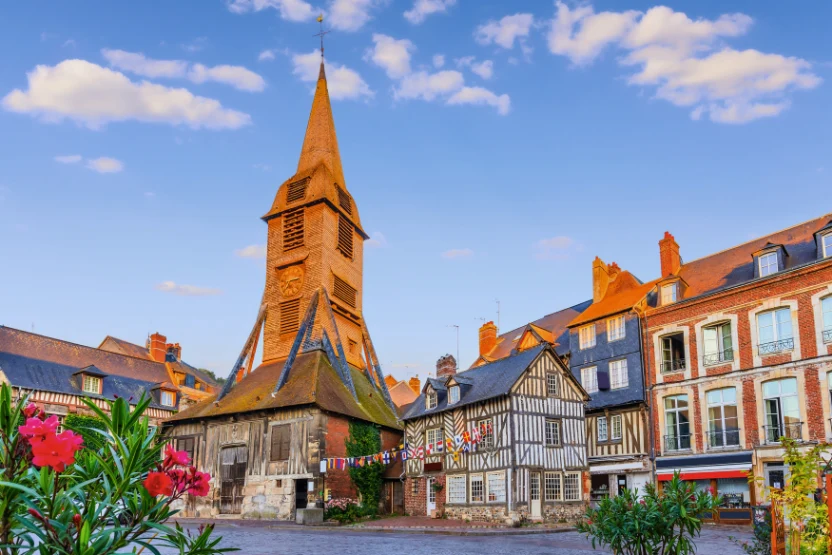
When is the best time to go to Honfleur?
Because of its coastal location, Honfleur is subject to rain year-round. However, the summer months are warm, and the winter months don't get too cold. For the best weather, the summer months are recommended, though it is Honfleur's busiest season.
How far is Honfleur from Paris?
It depends on your mode of transportation. By train, you can get there in 2 hours. By bus or car, it can take 3 or more.
Go to church in a tree
This attraction is as strange as it sounds.
Located in the small town of Allouville-Bellefosse, between Rouen and Étretat, is an ancient tree (called Chêne Chapelle) with two chapels inside.
While the precise age of the tree isn't known, it's believed to be somewhere between 800 and 1200 years old. The chapels were built inside of it in 1696 and still remain today.
This tree still stands with manmade support, and a spiral wooden staircase allows guests to access the chapels inside the tree. According to multiple media sources, Catholic Mass takes place here twice a year, and there's even an annual pilgrimage on August 15th.
When is the best time to visit Chêne Chapelle?
In Normandy, the weather is best in the summer months, though late Spring and early Autumn are also popular times to visit.
How far is Chêne Chapelle from Paris?
By train, it's 2 and a half to three hours.

How to travel from Paris to Normandy
This is a really broad question because Normandy is a large region with multiple destinations. The specific place you want to visit in Normandy will dictate what you need to do to get there.
That said, Normandy and its popular destinations are easily accessible by train from Paris. If you're not sure about train travel, you can always rent a car.
There are several different options for getting to Normandy, including the following:
- Trains
- Rideshares
- Car rentals
- By bus (such as Flixbus)
- Tours that provide transportation
While some locations are great for day trips (only an hour or two from Paris's city center), others are further away, meaning a multi-day trip might be more comfortable for travelers looking to get the best experience.

Tips for traveling to Normandy
Rent a car if you're crunched for time. If you want to see a lot in a short amount of time, renting a car might be your best bet. Normandy is very explorable by train and public transportation options, but you have to rely on train schedules. A rental car gives you more freedom, allowing you to come and go as you please.
Stay in Caen for easy access throughout Normandy. Caen is a mid-sized city that is fun to explore in itself. With a large castle, many gorgeous cathedrals, and a quaint old town, Caen offers a mix of the old and the new. For travelers, the best thing about Caen is its easy-to-navigate train station and central location that allows you to explore the entire region.
Consider tours if you want guidance. There are dozens upon dozens of tours available for travelers in Normandy, with or without transportation included. Tours are an excellent option for those who don't want to worry about the logistics. Just make sure you read the reviews and understand that they come at a cost before you make a decision.
Check if you need a visa. Before heading to France, make sure to check what kinds of permissions you need to enter the country. Some travelers (such as Indian or Chinese citizens for example) require visas. Others (like US or UK citizens) don't (providing it's a short trip).
Bring your rain gear. While the summer months may not rain much (depending on where you are), rain is always a possibility in much of Normandy. It's wise to bring an umbrella or waterproof jacket with a hood - just in case.
Say bonjour and au-revoir. In France, it's common courtesy to greet anyone you may be conversing with with a "hello" and a "goodbye". This applies to wait staff, hospitality workers, shopkeepers, drivers, and anyone else you may interact with. Always say Bonjour before asking someone for something, and don't forget to say au-revoir (goodbye).
If you ask for a coffee, you'll likely get espresso. This tip is more for Americans, but if you want "regular drip coffee", you will need to ask for a café-filtre (filtered coffee). Not all places offer café-filtre. If the place you're at doesn't have it, order a café allongé instead. It's essentially a small Americano.
For tap water at a restaurant, ask for a "carafe-d'eau". The tap water in France is perfectly drinkable. If you don't want to pay for bottled water, ask for a carafe-d'eau, and the server will bring a carafe of (free) tap water to the table.
Related posts
Upcoming travels ? Get Insured !
Find the right insurance for your trip by using our powerful comparison tool!
Sarah Pardi - November 21, 2025
Sarah Pardi - November 20, 2025
Sarah Pardi - November 14, 2025
Sarah Pardi - November 13, 2025


